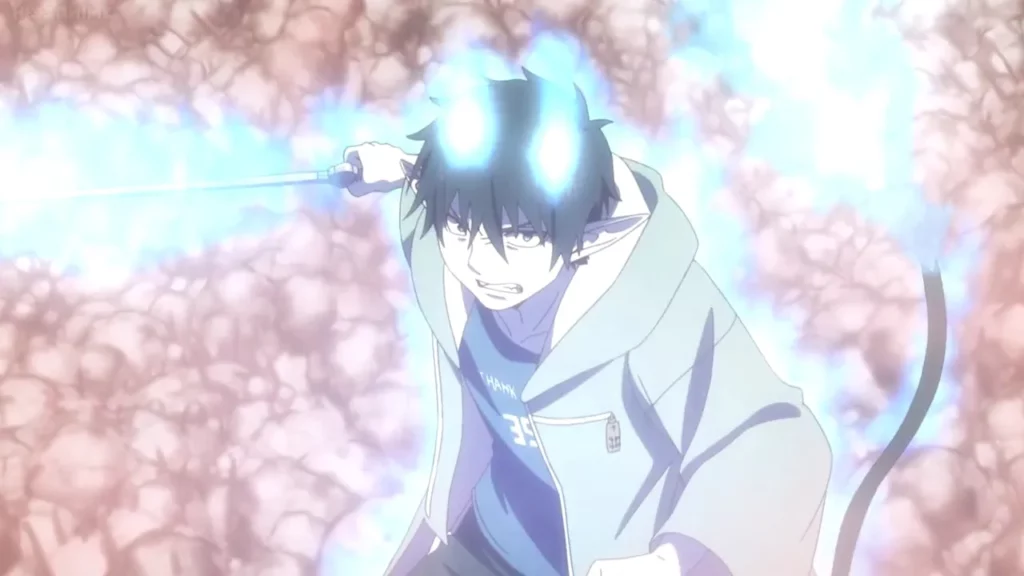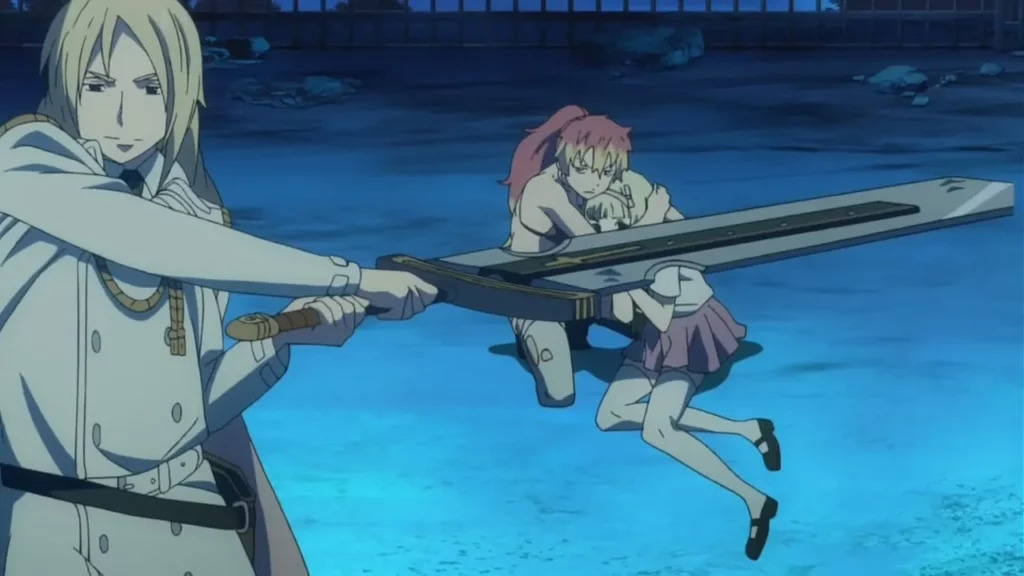Unveiling the Significance of sword from blue exorcist

Sword from Blue Exorcist: “Blue Exorcist,” an anime teeming with supernatural elements and intense battles, showcases a unique array of swords that transcend their physical existence. These blades aren’t mere instruments for combat; they serve as embodiments of deeper symbolism, resonating with the characters’ inner conflicts, journeys, and the overarching themes of the series.
The swords in “Blue Exorcist” wield immense significance, each bearing unique powers and historical importance that parallel the characters’ struggles and aspirations. From Kurikara, the iconic demon-slaying blade wielded by Rin Okumura, to the elemental Naiad carried by Shiemi Moriyama, these swords embody not only the powers of combat but also the personalities and convictions of their wielders.
Within the narrative, these swords become more than tools; they are extensions of the characters’ souls, reflecting their struggles and personal growth. They represent the constant battle against evil forces while simultaneously mirroring the internal conflicts and desires of those who wield them.
This exploration delves beyond the physical attributes of these swords, unraveling the layers of symbolism and deeper meanings they hold. By analyzing these blades and their influence on the characters and storyline, we uncover the intricate tapestry of Blue Exorcist and the profound role these swords play in shaping the identities and journeys of those who fight against the darkness.
Kurikara: The Iconic Demon-Slaying Sword

At the forefront stands the renowned Kurikara, wielded by the protagonist, Rin Okumura. Infused with the power to exorcise demons, this blade embodies Rin’s lineage as the son of Satan and symbolizes his ongoing battle against his demonic heritage. It is a Sword from Blue Exorcist.
Koma Sword: A Symbol of Protection
Ryuji “Bon” Suguro wields the Koma Sword, which protects against demons. The sword’s significance lies in its ability to combat evil entities, symbolizing Bon’s commitment to his ideals and protecting his allies. It is a Sword from Blue Exorcist.
Naiad: The Elemental Blade

Unique in its manifestation of elemental power, the Naiad sword is the domain of Shiemi Moriyama. Its ability to harness nature’s elements underscores Shiemi’s connection to the natural world and her role in balancing spiritual forces. It is a Sword from Blue Exorcist.
K’rik: The Weapon of Precision
Carried by Izumo Kamiki, the K’rik is a precision instrument. It allows Izumo to channel her powers accurately and with finesse. It symbolizes her meticulous approach and unwavering determination. It is a Sword from Blue Exorcist.
Caliburn: The Blade of Holy Light

An exceptional sword that embodies the power of light, Caliburn is wielded by Arthur A. Angel, symbolizing righteousness and courage. Its portrayal stands as a contrast to the darkness prevalent in the series. It is a Sword from Blue Exorcist.
FAQs
- What significance does Kurikara hold in “Blue Exorcist”? Kurikara, also known as the Demon-Slaying Sword, serves as a powerful weapon that symbolizes Rin Okumura’s lineage as the son of Satan and his relentless battle against demonic entities.
- Are there any historical or mythological references behind the swords in the series? The swords in “Blue Exorcist” often draw inspiration from various mythological and cultural sources, infusing elements of traditional beliefs into their designs and abilities.
- How do the swords reflect their wielders’ character traits? Each Sword resonates with its wielder’s personality and strengths, reflecting their ideals, inner conflicts, and personal journeys.
- Do the swords possess unique powers, and how do they influence the storyline? Yes, the swords exhibit distinct powers, influencing pivotal moments in the storyline and serving as catalysts for character development and conflicts.
- Are there specific rituals or processes related to the creation or enhancement of these swords? The creation and enhancement of these swords often involve rituals or specialized craftsmanship, amplifying their powers or abilities.
- Can the swords be considered symbols of good versus evil within the narrative? Yes, the swords symbolize the ongoing battle between good and evil, representing the characters’ determination to combat malevolent forces and uphold righteousness.
- Do the swords undergo any transformations or power enhancements throughout the series? Some swords undergo transformations or power enhancements, evolving alongside the characters’ growth and experiences.
- Are there any cultural or spiritual elements associated with the swords in “Blue Exorcist”? Yes, the swords carry cultural and spiritual significance, drawing upon various beliefs and traditions to imbue them with deeper meanings.
- How do the swords relate to the overall theme of the anime? The swords tie into the overarching themes of the series, emphasizing the constant struggle between light and darkness, reflecting the characters’ inner battles.
- Do the swords hold any connection to the characters’ pasts or lineages? Many swords are intrinsically linked to the characters’ lineages or personal histories, emphasizing their ties to ancestry and legacy.
- Is there a hierarchy or importance assigned to the various swords? Yes, certain swords hold greater importance or power levels, often reflecting the hierarchy of significance within the storyline.
- Are there any rivalries or conflicts centered around the swords among the characters? Some characters might engage in conflicts or competitions related to the ownership or significance of certain swords, leading to rivalries or disputes.
- Do the swords hold any relevance beyond their role in combat, such as cultural symbolism or ceremonial uses? Apart from their combat functions, some swords may carry cultural symbolism or serve in ceremonial practices, emphasizing their significance beyond battles.
- Are there any moral or ethical dilemmas associated with the use of these swords? Characters may face moral or ethical dilemmas regarding the use of these swords, often involving decisions about the greater good or personal values.
- Can the swords be considered characters in their own right within the narrative of “Blue Exorcist”? The swords possess distinct personalities and histories, allowing them to be perceived as symbolic characters influencing the storyline and character arcs.
Conclusion: The Symbolism and Depth of “Blue Exorcist” Swords
The swords within “Blue Exorcist” transcend their physical forms, embodying a deeper significance within the characters’ arcs and the overarching narrative. As this analysis unfolds, it becomes evident that these blades serve as more than tools for combat; they are extensions of the characters’ spirits and struggles. Kurikara’s symbolism as Rin Okumura’s demon-slaying weapon not only represents his heritage but also his relentless pursuit of redemption and his role in the battle against demonic forces. Similarly, the Koma Sword, Naiad, and K’rik showcase the personal traits and journeys of their wielders, reflecting their strengths and challenges.
The swords, collectively, form a narrative thread that weaves through the story, highlighting the characters’ growth, ideals, and the ever-present conflict between good and evil. Their significance goes beyond the physical battles; they mirror the internal conflicts, moral compasses, and the resolve of each character.
In essence, “Blue Exorcist” showcases a distinct and profound relationship between characters and their weapons. The swords not only act as formidable tools in their fight against demonic entities but also symbolize the intricate web of emotions, convictions, and aspirations of those who brandish them. They stand as emblems of the characters’ growth, serving as constant reminders of their internal struggles and the unwavering spirit they possess in their quest for balance and salvation. If you want to know about the Top 10 Zanpakuto In Bleach, please click on the link.






